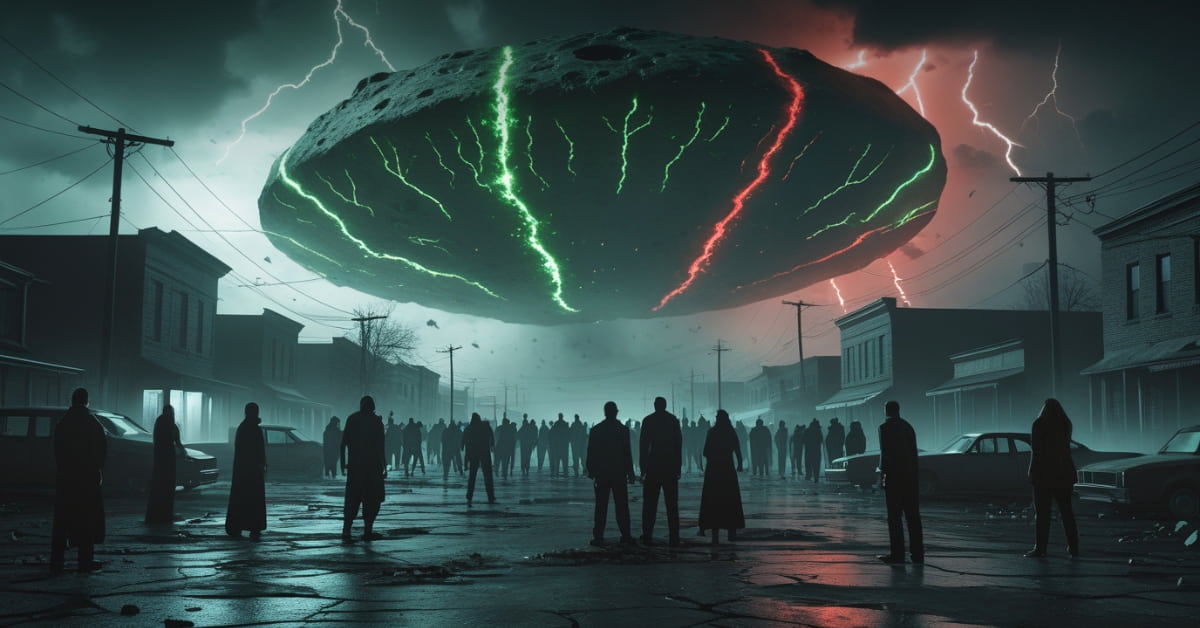The Universe: Unveiling the Ultimate Mystery Beyond the Stars

Intro: What If Everything You Know Is Just a Speck of What Exists?
What if we told you that everything—every memory, every human achievement, every war, discovery, and breath—has all taken place in a mere speck of an ever-expanding, almost infinite cosmos?
The universe is not just vast; it’s incomprehensibly large. It contains things we can’t see, things we can’t understand, and things that defy even the most advanced scientific explanations.
Some call it the grandest experiment of all time. Others believe it’s just the beginning of a far stranger journey.
Welcome to the master blueprint of everything—filled with black holes that bend time, galaxies that whisper through the void, and strange happenings that challenge reality itself.
This is not just science. This is your invitation to explore the unknowable.
Table of Contents
What Is the Universe Made Of?
The universe comprises everything: time, space, matter, energy, and laws that govern them. It’s the sum of all existence—seen and unseen.
1. Observable vs. Unobservable Universe
The observable universe stretches roughly 93 billion light-years in diameter, but the full universe could be infinite. The part we see is limited by the speed of light and the age of the universe (~13.8 billion years).
2. Matter Breakdown
- Ordinary Matter (5%)—Atoms, stars, galaxies, planets, and life.
- Dark Matter (27%)—Invisible mass holding galaxies together.
- Dark Energy (68%)—A mysterious force causing accelerated expansion.
These strange happenings—dark matter and dark energy—are still barely understood, but they dominate the universe.
How Old Is the Universe?
The universe is thought to have emerged from the Big Bang nearly 13.8 billion years ago. In an instant, all matter and energy expanded from a singularity, cooling and forming the first particles, then atoms, stars, and galaxies.
Timeline of Cosmic Evolution
- 0 sec: Big Bang
- 10^-36 sec: Cosmic inflation
- 3 mins: First atoms form (hydrogen, helium)
- 400,000 years: First light (cosmic microwave background)
- 100 million years: First stars ignite
- 1 billion years: First galaxies
- 9 billion years: Solar system forms
- 13.8 billion years: Present day
These events crafted the very fabric of reality.
Where Is Earth Located in the Universe?

In the vast architecture of the universe, Earth lies tucked inside the Orion Arm—a minor spiral branch of the Milky Way galaxy, safely distant from the galactic core. Located roughly 26,000 light-years from the galactic core, Earth’s solar system circles the supermassive black hole Sagittarius A every 230 million years. This seemingly unremarkable region is unusually calm, away from violent cosmic events. Among all the strange happenings unfolding across space, Earth’s stable placement may be one of the universe’s most profound accidents—or its greatest intention.
Galaxies: The Cities of the Cosmos

How Many Galaxies Exist?
Recent data from the James Webb Space Telescope suggests the observable universe may hold 2 trillion galaxies—10 times more than previously thought. Some galaxies are as mysterious as they are beautiful—like the eerie and chaotic systems explored in the Galaxy of Horrors.
Top 10 Famous Galaxies
- Milky Way—Our home.
- Andromeda (M31)—closest spiral galaxy.
- Messier 87 (M87)—Supermassive black hole imaged here.
- Whirlpool Galaxy (M51)—Known for its spiral arms.
- Sombrero Galaxy (M104) – Dense central bulge.
- Cartwheel Galaxy—Rare ring-shaped galaxy.
- Triangulum Galaxy (M33)—Part of the local group.
- Large Magellanic Cloud—Satellite of Milky Way
- IC 1101—Largest known galaxy.
- Cosmos-772—Newly discovered ancient galaxy.
Galaxies range in type: spiral, elliptical, irregular, and peculiar. They host stars, black holes, and possibly life.
Stars: The Engines of Creation

How Many Stars Exist?
There are roughly 1 septillion stars (10^24) in the observable universe.
Life Cycle of a Star
- Stellar Nursery – Formed in molecular clouds
- Protostar – Collapsing gas begins fusion
- Main Sequence – Stable fusion (e.g., our Sun)
- Red Giant / Supergiant – Expansion phase
- Supernova / Planetary Nebula – Explosive death
- White Dwarf / Neutron Star / Black Hole – Final form
Stars not only light galaxies but also forge heavier elements necessary for life.
Planets: Cradles of Potential Life

How Many Planets?
Each star in the universe is believed to host at least one planet—and often many more.
With an estimated 1 septillion stars, astronomers predict there could be 1 sextillion planets scattered across the cosmos. That’s a number so vast, it stretches the limits of human imagination.
Closer to home, our solar system contains eight major planets and one dwarf planet—Pluto. These neighbors—Mercury, Venus, Earth, Mars, Jupiter, Saturn, Uranus, and Neptune—each have unique atmospheres, structures, and histories that continue to captivate scientists.
Though Pluto was reclassified in 2006, its icy surface and eccentric orbit still earn it a respected place in our planetary story.
Together, these celestial bodies orbit our Sun in a delicate, ancient rhythm—one that reflects the order of a solar system shaped over billions of years.
And beyond Neptune, whispers of a hidden Planet Nine and other distant, unseen objects hint at strange happenings still lurking in the outer darkness… waiting to be discovered.
Known Exoplanets
NASA has confirmed over 5,800 exoplanets, many in the habitable zone.
Earth-Like Candidates
These planets could host life, though none are confirmed yet.
Black Holes: Where Time Stops

What Are Black Holes?
Black holes are areas in space where gravity is so intense that nothing—not even light—can break free.
Types of Black Holes
- Stellar-mass – Formed from collapsing stars
- Intermediate – Thousands of solar masses
- Supermassive – Millions to billions of solar masses
- Primordial – Hypothetical, from Big Bang
Top 5 Newly Discovered Dark Black Holes (2023–2025)
- Gaia BH3 – 1,900 light-years away, 33 times heavier than the Sun.
- Gaia BH1 – Nearest known (~1,560 light-years).
- Gaia BH2 – Dormant, ~3,800 light-years.
- VFTS 243 – In Large Magellanic Cloud.
- NGC 1850 BH1 – Intermediate black hole candidate.
These “silent” black holes were detected by gravitational pull—not light. Their discovery reveals a hidden Mystery of the Vanishing Stars and a universe of mass we can’t see.
The Milky Way: Our Galactic Home

Structure
- Barred spiral galaxy
- 100–400 billion stars
- 150,000 light-years across
- Central supermassive black hole: Sagittarius A*
Motion
- Sun orbits center every 230 million years
- The Milky Way and Andromeda galaxies are set to collide in about 4 billion years.
How Far Is Everything?
| Object | Distance from Earth |
|---|---|
| Moon | 384,000 km |
| Sun | 150 million km |
| Mars | ~225 million km |
| Proxima Centauri | 4.24 light-years |
| Sagittarius A* (center) | 26,000 light-years |
| Andromeda Galaxy | 2.5 million light-years |
| Most distant galaxy (JWST) | ~13.5 billion light-years |
Could There Be Life Out There?
Life may be common, rare, or already extinct. But statistically, it’s unlikely we’re alone.
What Scientists Look For:
- Liquid water
- Carbon-based molecules
- Atmospheric oxygen/methane
- Stable temperature zones
Notable Projects:
- SETI – Radio telescopes listening for alien signals.
- James Webb Telescope – Scanning exoplanet atmospheres.
- Europa Clipper – Probing Jupiter’s moon for life beneath the ice.
The universe could host microbial life, intelligent species, or civilizations using space-based wireless electricity.
What’s Still Unseen?
- Dark Energy – Driving expansion.
- Rogue Planets – Not orbiting stars.
- Cosmic Strings – Theoretical 1D defects in spacetime.
- Multiverse Theories – Our universe may be one of many.
- Unexplained Fast Radio Bursts – Brief, powerful cosmic signals.
- Alien Megastructures? – Like Dyson spheres, still hypothetical.
Strange happenings suggest we’ve barely scratched the surface.
Eyes in the Sky: Top Satellites Revealing the Universe’s Secrets
In 2025, more than 9,500 operational satellites are orbiting Earth, but only a select few are designed to explore the universe beyond our planet. These scientific and observational satellites search the skies for exoplanets, black holes, distant galaxies, and cosmic radiation—helping us uncover the secrets of space. As our curiosity expands, so does our presence in orbit, driven by both government space agencies and private space tech giants.
Top 10 Active Space Telescopes & Satellites Exploring the Universe (as of 2025):
- James Webb Space Telescope (NASA/ESA) – Studying the early universe, galaxies, and exoplanets.
- Hubble Space Telescope (NASA/ESA) – Over 30 years revealing the cosmos.
- Gaia (ESA) – Precisely mapping the Milky Way’s stellar landscape.
- Chandra X-ray Observatory (NASA) – Observing X-rays from black holes and supernovae.
- TESS (NASA) – Spotting unseen exoplanets around nearby stars.
- Spektr-RG (Russia/Germany) – Surveying the sky in X-ray wavelengths.
- Euclid (ESA) – Launched in 2023 to explore dark matter and dark energy.
- Nancy Grace Roman Space Telescope (NASA) – Successor to Hubble, launching in late 2025.
- LISA Pathfinder (ESA) – Laying the groundwork for space-based wave detection.
- CHEOPS (ESA) – Measuring the size and structure of known exoplanets.
These observatories act as our eyes in space, peering into regions too distant or ancient for any human to reach. And with new missions planned every year, our understanding of the universe is evolving faster than ever—pushing the boundary between science and the unknown. Who knows what strange happenings they’ll uncover next?
When Will the Universe End?
Theories of Cosmic Fate:
- Big Freeze—The universe expands forever, stars burn out.
- Big Rip—Expansion tears everything apart.
- Big Crunch—Expansion reverses; universe collapses.
- Heat Death—Maximum entropy; no usable energy remains.
Each theory hinges on how dark energy behaves.
Conclusion: The Grandest Mystery of All
From a single cosmic flash to galaxies beyond count, from black holes to planets teeming with potential, the universe is the greatest puzzle ever written in space and time. Its story spans over 13 billion years, and yet, we’ve only read the first few pages. These strange happenings—dark matter webs, silent black holes, quantum anomalies—tell us we are not yet ready to close the book.
Are we alone? Will we ever master time or see into other dimensions? Could we one day beam power across galaxies using light? As reported by Strange Happenings, we’re only beginning to decode the whispers of creation.
What happens when we discover that the real mystery… is us?
For more insights into the strangest corners of our reality, keep exploring Strange Happenings.




